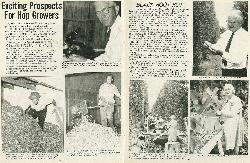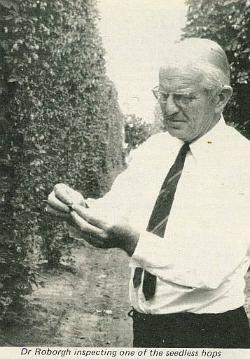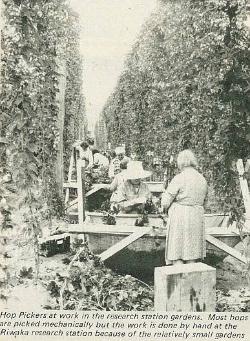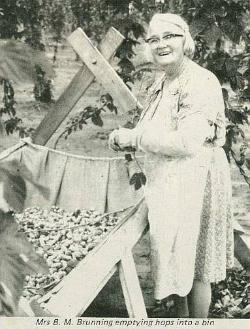37
Black Root Rot
Dr Roborgh's association with New Zealand's hop industry has been a long and invaluable one. To him the industry owes its present healthy state and probably an even healthier future.
He came to the station in Riwaka in 1951 after being appointed in Holland by the New Zealand Government. Prior to coming here he was at the Hop Research Station in Kent, England, for four months. His task here? To produce a variety of hop resistant to the scourge of New Zealand hops - black root rot (Phytophthora citricola). Related fungi cause potato blight and collar rot in Cox Orange apples.
Black root rot was particularly damaging to the Californian variety of hop, introduced to New Zealand growers at the turn of the century. The first settlers to grow hops planted English varieties. But later they found the Californian variety thrived in Nelson conditions and was three times as productive as the English plants. It was not long before all growers had the new variety.
The industry, like the Californian hop, thrived until 1930 when black root rot took hold. This menace to the industry could have caused it to fold. Growers found 40-50 per cent of their hops affected by the disease each season and were becoming tired of the extra work involved in digging out the diseased plants and replanting.
An approach was made to the Government by brewers and growers in 1948 and it was decided to establish the research station.
Ten years were spent developing varieties resistant to black root rot. In 1959 two varieties - First Choice and Calicross - were released and the following year a third, Smoothcone, was made available to growers.
The hop growing industry was now saved. But what was going to be the next main project of the Hop Research Station?
"The Government wanted to export hops", said Dr Roborgh. So Dr Roborgh, and his staff, set about producing a seedless variety of hop.






